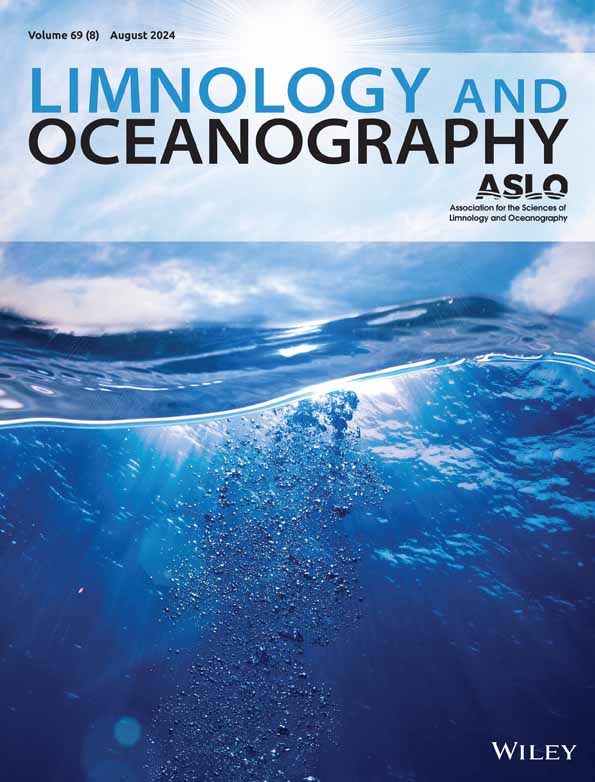Responses of microbial communities and greenhouse gas production to land use change in mangrove wetland sediments
IF 3.8
1区 地球科学
Q1 LIMNOLOGY
引用次数: 0
Abstract
Tidal wetland reclamation is a worldwide issue that profoundly alters ecological functions and ecosystem service provisions; however, its impacts on sediment microbial communities and functions remain poorly understood. Here, we investigated the spatial and seasonal patterns of greenhouse gas (GHG) production in response to land use change in mangrove wetlands and elucidated the underlying mechanisms by integrating environmental parameters and microbial community characteristics. In the time period studied, land use change substantially reduced the sediment organic matter content, microbial community richness and diversity, and CO红树林湿地沉积物微生物群落和温室气体排放对土地利用变化的响应
潮汐湿地填海是一个世界性的问题,它深刻地改变了生态功能和生态系统服务功能;然而,其对沉积物微生物群落和功能的影响仍然知之甚少。本文通过综合环境参数和微生物群落特征,研究了红树林湿地温室气体(GHG)产生对土地利用变化响应的空间和季节格局,并阐明了其潜在机制。在研究时段内,土地利用变化显著降低了沉积物有机质含量、微生物群落丰富度和多样性以及CO2生产速率。将红树林转变为更干燥的土地覆盖类型,即果园和菜地,显著降低了还原性底物(硫化物、Fe2+和NH4+)、微生物网络的复杂性和稳定性以及CH4生产速率,同时增加了N2O生产速率。红树林转为淹水养殖池后,这些参数呈现相反的趋势。红树林湿地的温室气体总产出率为399.8 mg CO2e kg−1 d−1,果园、菜地和水产池塘的温室气体总产出率分别下降了68.83%、69.86%和30.84%。微生物群落丰富度、网络复杂性和稳定性与CH4和N2O的生成速率密切相关,而不是与CO2的生成速率相关,后者可以更好地指示特定功能(CH4和N2O的生成)。因此,保护微生物“相互作用”对于减轻人类活动对水生环境中微生物群落丰富度和多样性丧失的负面影响具有重要意义。未来的研究应考虑环境条件和微生物群落的多样性、组成、相互作用和活动,以全面了解生态系统的功能。
本文章由计算机程序翻译,如有差异,请以英文原文为准。
求助全文
约1分钟内获得全文
求助全文
来源期刊

Limnology and Oceanography
地学-海洋学
CiteScore
8.80
自引率
6.70%
发文量
254
审稿时长
3 months
期刊介绍:
Limnology and Oceanography (L&O; print ISSN 0024-3590, online ISSN 1939-5590) publishes original articles, including scholarly reviews, about all aspects of limnology and oceanography. The journal''s unifying theme is the understanding of aquatic systems. Submissions are judged on the originality of their data, interpretations, and ideas, and on the degree to which they can be generalized beyond the particular aquatic system examined. Laboratory and modeling studies must demonstrate relevance to field environments; typically this means that they are bolstered by substantial "real-world" data. Few purely theoretical or purely empirical papers are accepted for review.
 求助内容:
求助内容: 应助结果提醒方式:
应助结果提醒方式:


